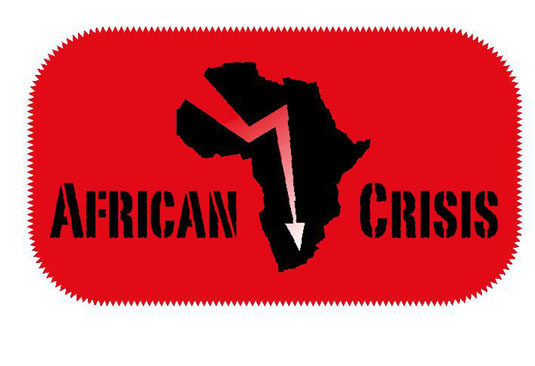WARNING: This is Version 1 of my old archive, so Photos will NOT work and many links will NOT work. But you can find articles by searching on the Titles. There is a lot of information in this archive. Use the SEARCH BAR at the top right. Prior to December 2012; I was a pro-Christian type of Conservative. I was unaware of the mass of Jewish lies in history, especially the lies regarding WW2 and Hitler. So in here you will find pro-Jewish and pro-Israel material. I was definitely WRONG about the Boeremag and Janusz Walus. They were for real.
Original Post Date: 2010-06-08 Time: 14:00:02 Posted By: News Poster
The new Mauritian government announced by Prime Minister Navichandra Ramgoolam fails to address the gender gap in terms of women’s participation in positions of authority. Only three women have been appointed ministers in the 25-member cabinet.
These are Sheilabai Bappoo, who is the Minister for Gender Equality, Child Development and Family Welfare, Leela Dookun-Luchoomun who was appointed Minister of Social Security, National Solidarity and Reform Institutions, and Santi Hanoomanjee, who is the new Minister for Health and Quality of Life.
Bappoo is the only one of the three women who has served in the previous cabinet as Minister of Social Security, National Solidarity and Senior Citizens Welfare and Reform Institutions. Dookun-Luchoomun is a former Minister of Arts and Culture (2000-2005) while Hanoomanjee is new in the cabinet.
In 2005, Mauritius had two women ministers in the 22-member cabinet, representing nine percent. This therefore, means that the recent appointment has marginally increased gender representation to 12 percent.
However, the figure still falls short of the target of the Southern African Development Community (SADC) to have 30 percent women in decision-making positions by 2005, and shows little progress toward the target set by the SADC Protocol on Gender and Development in 2008 to achieve 50 percent of women in decision-making positions in the public and private sector by 2015.
The 50-percent target is also in line with the current target of the African Union. Mauritius is a signatory to the 2005 regional target to have 30 percent women in decision-making positions.
However, the country is yet to append its signature to the SADC Protocol on Gender and Development. Gender representation in the 5 May parliamentary election that was won by the Alliance of the Future coalition also fell short of the regional target. Of the 529 candidates, only 21 were women – with 10 being elected into the 70-seat assembly.
Three more were appointed among the eight “best losers”, representing about 19 percent of the total number in parliament. At the last elections held five years ago, 12 women were elected in parliament, representing about 17 percent. Despite a recent marginal increase, the figure still fails to address the gender gap and promotion of women’s participation in nation building.
A total of 62 out of the 70-seat unicameral assembly are elected by direct popular vote in a block system where each voter gets to cast three ballots for three candidates from each of the 21 constituencies, including the island of Rodrigues, off the south-east coast of Mauritius, which elects two deputies. The remaining eight candidates are drawn from a list of “best losers” to ensure a fair representation of various communities of the country.
However, a similar method is not being used to address the gender imbalance yet women make up the largest number of voters as well as population of Mauritius. In the SADC region, South Africa has the largest women representation in parliament with about 45 percent.
Other notable figures are Mozambique and Angola both at about 37 percent, Namibia at 31 percent and the United Republic of Tanzania just over 30 percent. At ministerial level, South Africa also leads with 42 percent, while Lesotho and Angola have both achieved 32 percent. For deputy ministers, Lesotho has a women representation of 60 percent, South Africa 39 percent, and Malawi and Mozambique both have 30 percent.
Despite a few setbacks in some countries, the SADC region has reached the third highest percentage of women in politics, at the parliamentary level, with 20 percent, a figure surpassed only by the Nordic countries with 41 percent and the Americas at 21 percent. SADC’s average percentage of women in parliament is higher than the world average of 18.5 percent, the Sub-Saharan average of 18.6 percent, Asia at 18.4 percent, the Pacific at 15.2 percent, and that of the Arab States (9.1 percent) which is the lowest.
In the 5 May parliamentary elections in Mauritius, the Alliance of the Future that comprises the Mauritius Labour Party, Mauritian Social Democratic Party and the Mauritian Socialist Movement, won 41 of the 62 direct seats in the house of assembly. The main opposition coalition, the Alliance of the Heart made up of the Mauritian Militant Movement, National Union and the Mauritian Social Democratic Movement secured 18 seats.
The Rodrigues Movement got two seats while the other remaining seat was secured by the Mauritian Solidarity Front.
Original date published: 8 June 2010
Source: http://allafrica.com/stories/201006080304.html?viewall=1
